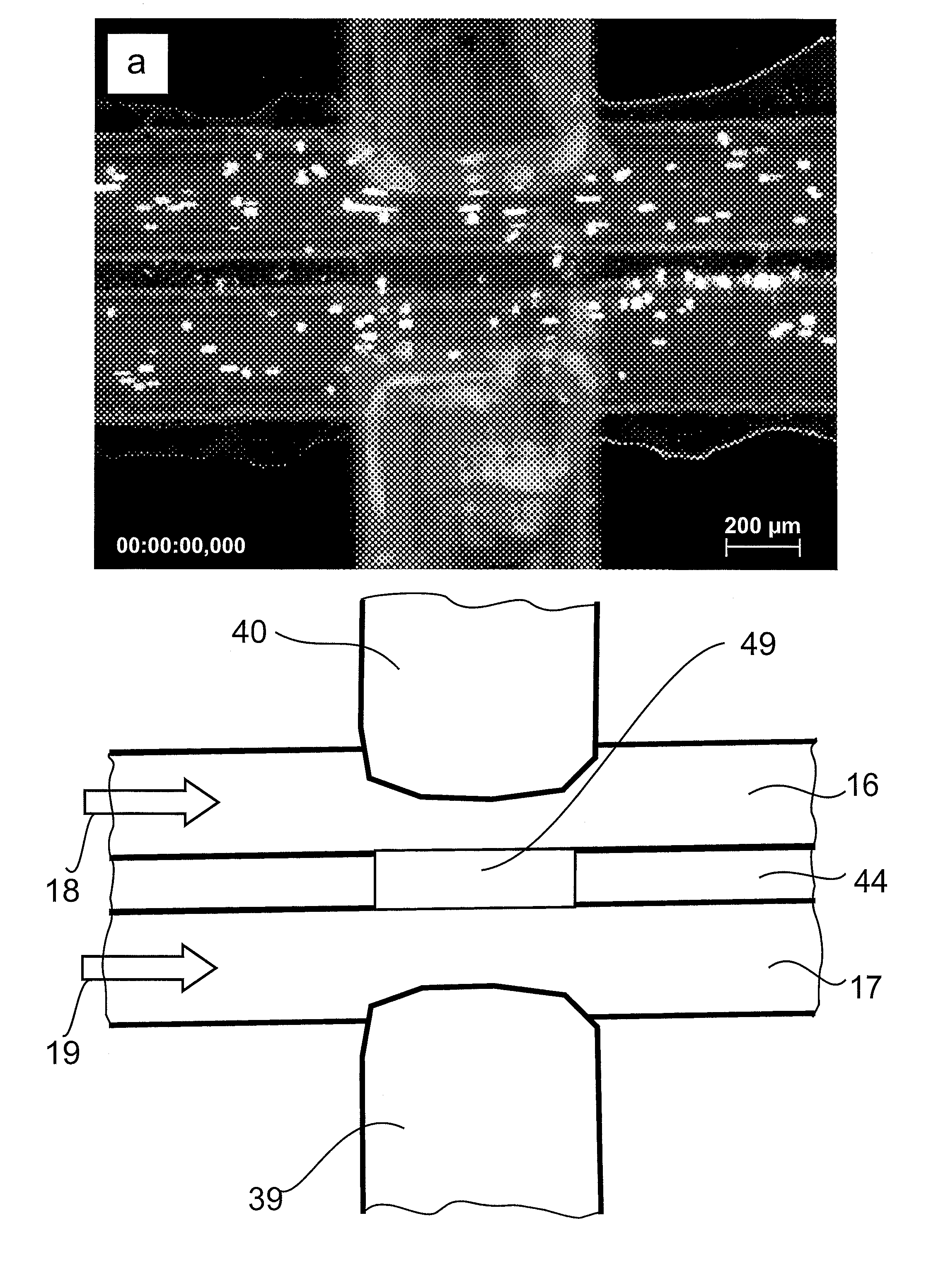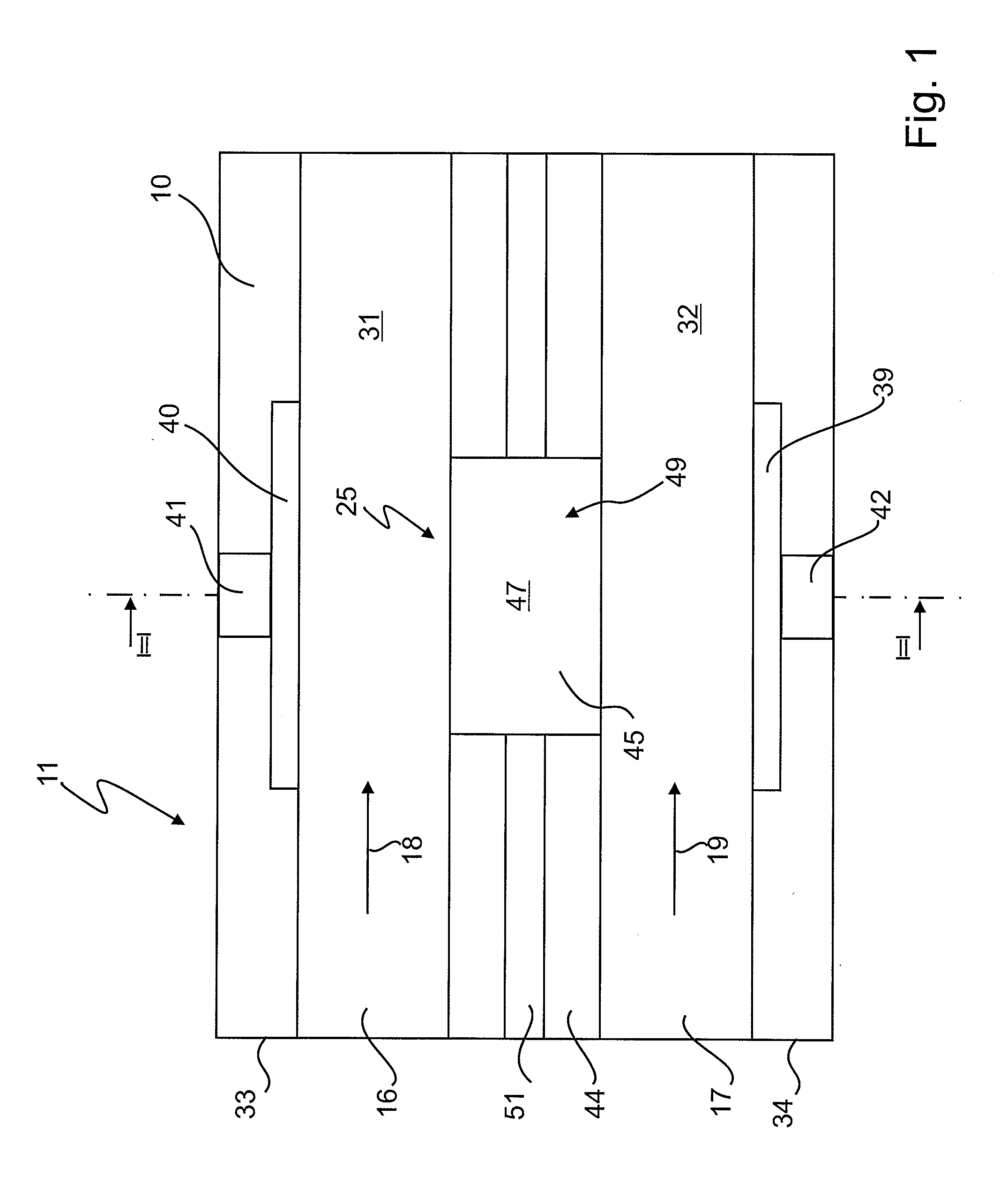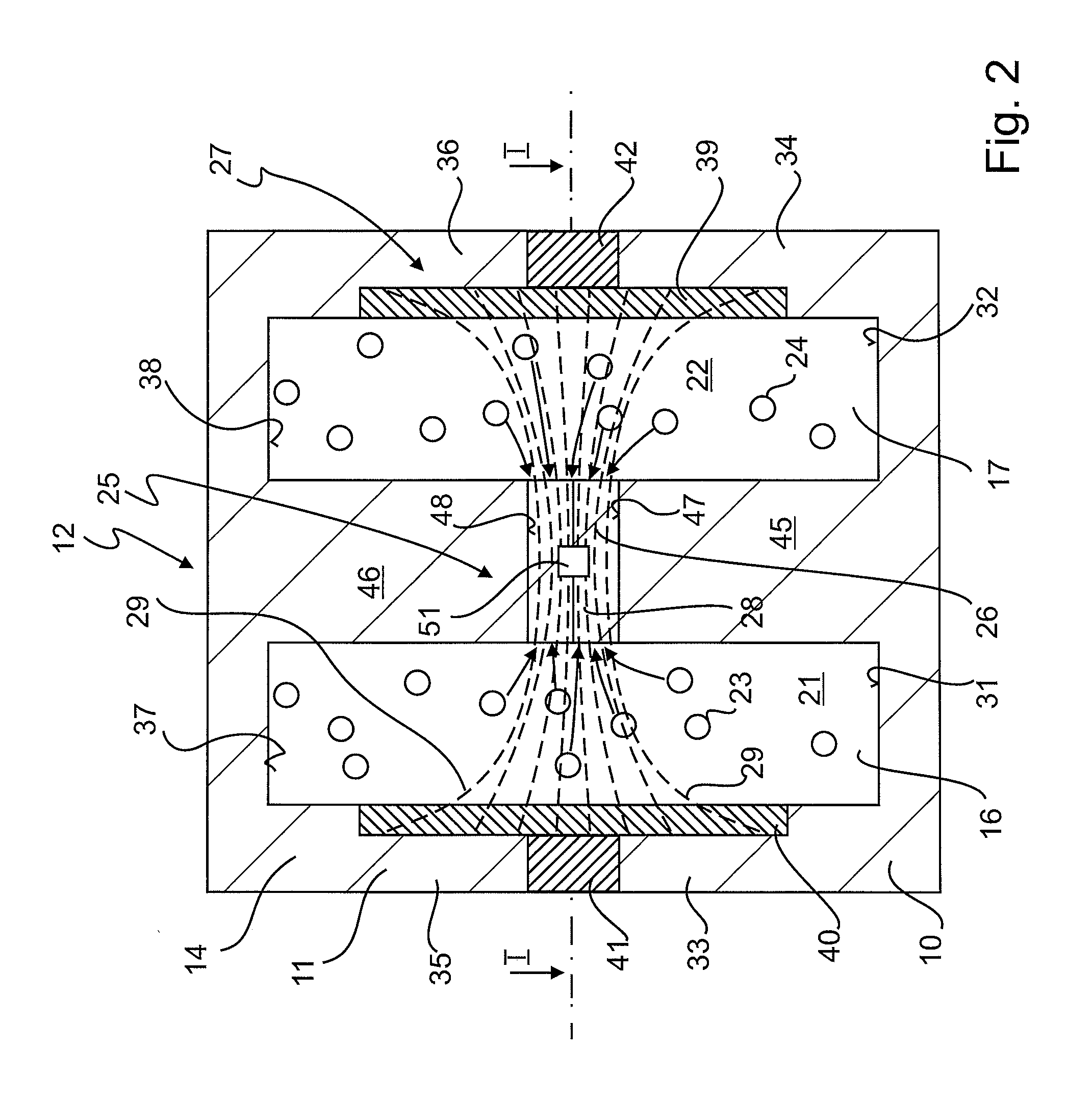Microfluidic system and method for assembling and for subsequently cultivating, and subsequent analysis of complex cell arrangements
a microfluidic system and cell technology, applied in the field of microfluidic systems for assembling and subsequently analysing complex cell arrangements, can solve the problems of large expenditures, declining use, and limited predictive power
- Summary
- Abstract
- Description
- Claims
- Application Information
AI Technical Summary
Benefits of technology
Problems solved by technology
Method used
Image
Examples
Embodiment Construction
[0103]FIG. 1 depicts a diagrammatic plan view, in the form of a detail not true to scale, of a lower part 10 of a first embodiment of a microstructure 11 of a microfluidic system.
[0104]FIG. 2 shows a section transversely through the microfluidic system 12 along the line II-II in FIG. 1, while the plan view in FIG. 1 is viewed along the line I-I in FIG. 2.
[0105]The microstructure 11 has an upper part 14 which corresponds in geometric structure to the lower part 10 and which closes the lower part 10.
[0106]Two microchannel segments 16, 17 run through the microstructure 11 in parallel with and at a distance from one another, which are formed, in the example shown, partly in the lower part 10 and partly in the upper part 14. It is, of course, possible also for the microchannel segments 16 and 17 to be formed entirely in the lower part 10 or in the upper part 14, and then the upper 14 and the lower part 10 forming merely a channel cover and channel base, respectively.
[0107]The microstruct...
PUM
| Property | Measurement | Unit |
|---|---|---|
| length | aaaaa | aaaaa |
| height | aaaaa | aaaaa |
| width | aaaaa | aaaaa |
Abstract
Description
Claims
Application Information
 Login to View More
Login to View More - R&D
- Intellectual Property
- Life Sciences
- Materials
- Tech Scout
- Unparalleled Data Quality
- Higher Quality Content
- 60% Fewer Hallucinations
Browse by: Latest US Patents, China's latest patents, Technical Efficacy Thesaurus, Application Domain, Technology Topic, Popular Technical Reports.
© 2025 PatSnap. All rights reserved.Legal|Privacy policy|Modern Slavery Act Transparency Statement|Sitemap|About US| Contact US: help@patsnap.com



